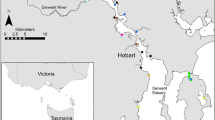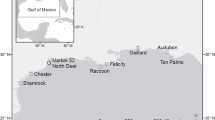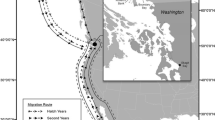Abstract.
Persistent contaminants in ecosystems are often monitored via organisms that bioaccumulate the pollutant of interest. Several published studies have used colonial wading birds to assess contamination by heavy metals in aquatic ecosystems. Using a nonlethal sampling regimen, this study identified chick feathers and guano as tissues that best reflect local contamination. Both cadmium and lead were detected in food samples (0.3–4.3 μg/g Cd, 0.8–9.3 μg/g Pb), guano (0.2–3.2 μg/g Cd, 1.0–9.5 μg/g Pb), and feathers (0.6–25.4 μg/g Cd, 1.2–16.9 μg/g Pb) from little blue heron chicks at levels similar to other studies. Chicks exposed to cadmium had significantly slower growth rates than nonexposed chicks, and exposure to lead was correlated with increased nestling mortality. The appropriate scale of comparison necessary to demonstrate these effects and the usefulness of wading birds as bioindicators are discussed.
Similar content being viewed by others
Author information
Authors and Affiliations
Additional information
Received: 22 September 1998/Accepted: 24 April 1999
Rights and permissions
About this article
Cite this article
Spahn, S., Sherry, T. Cadmium and Lead Exposure Associated with Reduced Growth Rates, Poorer Fledging Success of Little Blue Heron Chicks (Egretta caerulea) in South Louisiana Wetlands. Arch. Environ. Contam. Toxicol. 37, 377–384 (1999). https://doi.org/10.1007/s002449900528
Issue Date:
DOI: https://doi.org/10.1007/s002449900528




